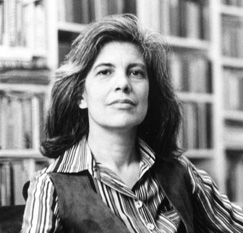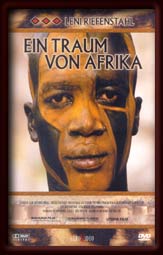
Helene Bertha Amalie Riefenstahl was a German director, producer, screenwriter, editor, photographer and actress known for producing Nazi propaganda.

Triumph of the Will is a 1935 German Nazi propaganda film directed, produced, edited and co-written by Leni Riefenstahl. Adolf Hitler commissioned the film and served as an unofficial executive producer; his name appears in the opening titles. It chronicles the 1934 Nazi Party Congress in Nuremberg, which was attended by more than 700,000 Nazi supporters. The film contains excerpts of speeches given by Nazi leaders at the Congress, including Hitler, Rudolf Hess and Julius Streicher, interspersed with footage of massed Sturmabteilung (SA) and Schutzstaffel (SS) troops and public reaction. Its overriding theme is the return of Germany as a great power with Hitler as its leader. The film was produced after the Night of the Long Knives, and many formerly prominent SA members are absent.

Susan Lee Sontag was an American writer, critic, and public intellectual. She mostly wrote essays, but also published novels; she published her first major work, the essay "Notes on 'Camp' ", in 1964. Her best-known works include the critical works Against Interpretation (1966), On Photography (1977), Illness as Metaphor (1978) and Regarding the Pain of Others, as well as the fictional works The Way We Live Now (1986), The Volcano Lover (1992), and In America (1999).
The Nuba people are indigenous inhabitants of central Sudan. The Nuba are made up of 50 various indigenous ethnic groups who inhabit the Nuba Mountains of South Kordofan state in Sudan, encompassing multiple distinct people that speak different languages which belong to at least two unrelated language families. Since 2011, when the southern part of Sudan became an independent state as South Sudan, the Nuba now live in the southern part of Sudan. Estimates of the Nuba population vary widely; the Sudanese government estimated that they numbered 2.07 million in 2003.
George William Adam Rodger was a British photojournalist. He was noted for his work in Africa, and for photographing mass deaths at Bergen-Belsen concentration camp during the end of the World War II.

Under the Sign of Saturn is Susan Sontag's third collection of criticism, comprising seven essays. The collection was originally published in 1980. All of the essays were originally published, in a different or abridged form, in The New York Review of Books except for "Approaching Artaud," which was originally published in The New Yorker.

Nuba wrestling refers to traditional sports of the Nuba peoples in the Nuba Mountains of South Kordofan state, in southern Sudan.

Gadalla Gubara was a Sudanese cameraman, film producer, director and photographer. Over five decades, he produced more than 50 documentaries and three feature films. He was a pioneer of African cinema, having been a co-founder of both the Pan-African Federation of Filmmakers FEPACI and the FESPACO Film festival. His daughter, Sara Gubara, who is a graduate of Cairo Higher Institute of Cinema, Egypt, assisted him with his later film projects, after he had lost his eyesight. She is considered to be Sudan's first female film director.

The Last of the Nuba is the English-language title of German film director Leni Riefenstahl's 1973 Die Nuba, a book of photographs, published a year later in the United States. It was an international bestseller and was followed up by the 1976 book Die Nuba von Kau. It was the subject of a famous critique by Susan Sontag in claiming that it adhered to a "fascist aesthetic".

Leni Riefenstahl's Memoiren is the 1987 autobiography of German film director Leni Riefenstahl. The book received a 1993 American release and coincided with the release of the acclaimed documentary The Wonderful, Horrible Life of Leni Riefenstahl, as well as Riefenstahl's ninetieth birthday. It was featured on the 1993 New York Times list of notable books of the year.

Leni Riefenstahl: Her Dream of Africa is a 2003 documentary-film by Ray Müller. The film follows Leni Riefenstahl's return to Sudan to visit the Nuba tribe whom she published photographs of in best-sellers such as The Last of the Nuba and The People of Kau. It is the second collaboration between Riefenstahl and Müller. She was the subject of his acclaimed 1993 documentary The Wonderful, Horrible Life of Leni Riefenstahl, which followed her life and reflected on her Nuba activities.

The participation of women in photography goes back to the very origins of the process. Several of the earliest women photographers, most of whom were from Britain or France, were married to male pioneers or had close relationships with their families. It was above all in northern Europe that women first entered the business of photography, opening studios in Denmark, France, Germany, and Sweden from the 1840s, while it was in Britain that women from well-to-do families developed photography as an art in the late 1850s. Not until the 1890s, did the first studios run by women open in New York City.

Jack V. Picone is an Australian-born documentary photographer, photojournalist, author, festival/collective founder, tutor and academic. He specialises in social-documentary photography.

Photography in Sudan refers to both historical as well as to contemporary photographs taken in the cultural history of today's Republic of the Sudan. This includes the former territory of present-day South Sudan, as well as what was once Anglo-Egyptian Sudan, and some of the oldest photographs from the 1860s, taken during the Turkish-Egyptian rule (Turkiyya). As in other countries, the growing importance of photography for mass media like newspapers, as well as for amateur photographers has led to a wider photographic documentation and use of photographs in Sudan during the 20th century and beyond. In the 21st century, photography in Sudan has undergone important changes, mainly due to digital photography and distribution through social media and the Internet.
Cinema of Sudan refers to both the history and present of the making or screening of films in cinemas or film festivals, as well as to the persons involved in this form of audiovisual culture of the Sudan and its history from the late nineteenth century onwards. It began with cinematography during the British colonial presence in 1897 and developed along with advances in film technology during the twentieth century.

The visual arts of Sudan encompass the historical and contemporary production of objects made by the inhabitants of today's Republic of the Sudan and specific to their respective cultures. This encompasses objects from cultural traditions of the region in North-East Africa historically referred to as the Sudan, including the southern regions that became independent as South Sudan in 2011.

Soudan 2019, année zéro is a book about the Sudanese revolution, published in French in 2021. It contains descriptions, commentaries and photographs of the protestors' sit-in area during the weeks in May and June 2019 that led up to the Khartoum massacre. As additional visual documents, the book contains images by Sudanese documentary photographers, illustrating different stages and social backgrounds of the revolution up to the destruction of the sit-in by security forces on 3 June 2019.
Eythar Gubara, is a Sudanese freelance photographer and activist for human rights. She is mainly known for her documentary images of everyday life in Sudan and of events during the Sudanese Revolution. In her work, she has placed a special focus on images of women, as well as on social diversity in Sudan.
Sudan Memory is an online archive and cultural heritage project, provided by an international group of partners with the aim of conserving and promoting Sudanese cultural heritage. In the course of the project, digital reproductions of books and newspapers, photographs and films, visual art and architecture, as well as of other cultural objects in Sudan were created and published on the project's website.

Sara Gadallah Gubara Al-Faki Ibrahim is a Sudanese competition swimmer and film director. She was the first Sudanese woman to participate in international swimming competitions, such as the Capri International long-distance swimming race in Italy, and the first Sudanese woman to swim the English Channel to France, despite having contracted polio in childhood. Further to her lifelong activity as a sportswoman, she became noted as a pioneering female filmmaker in her country, first assisting her father, Gadalla Gubara, and later directing her own films.














